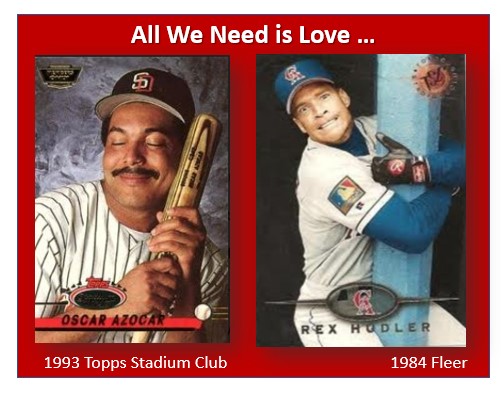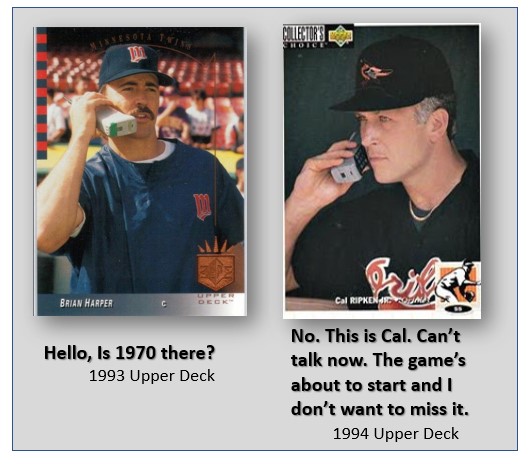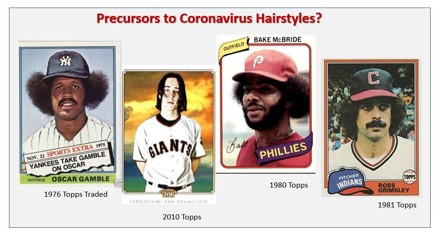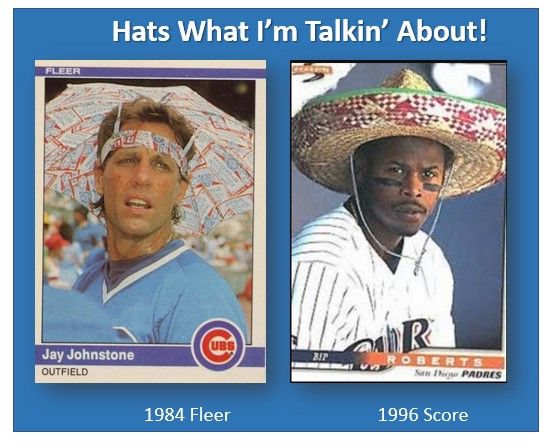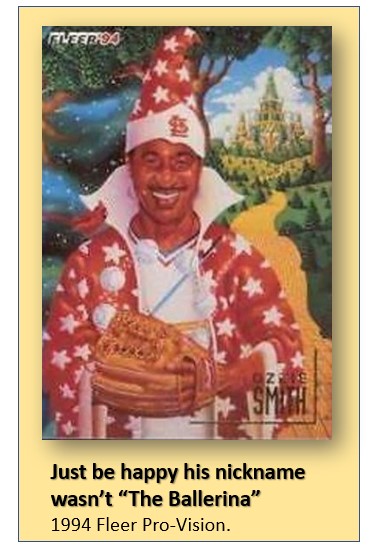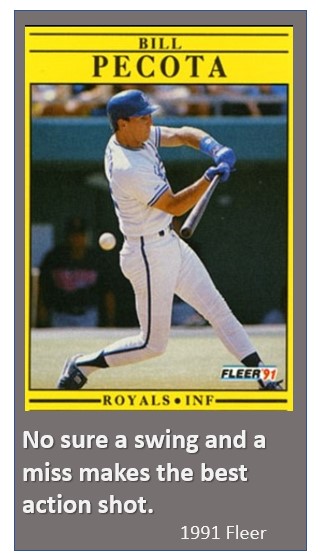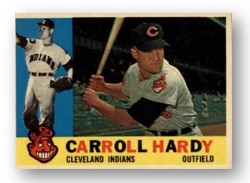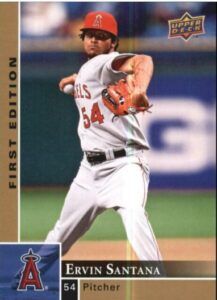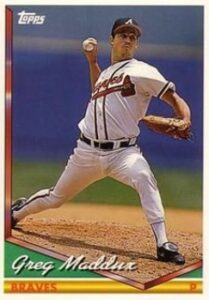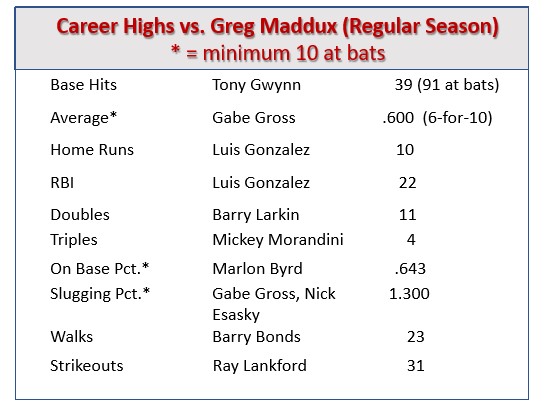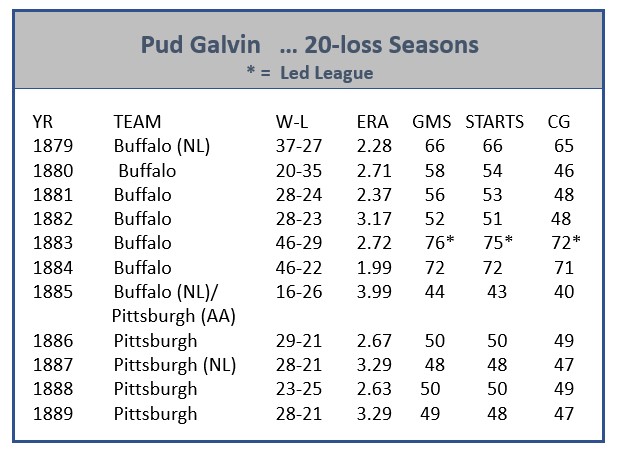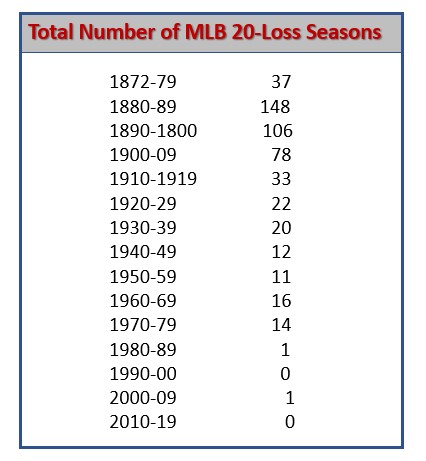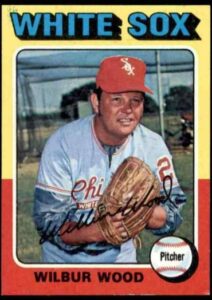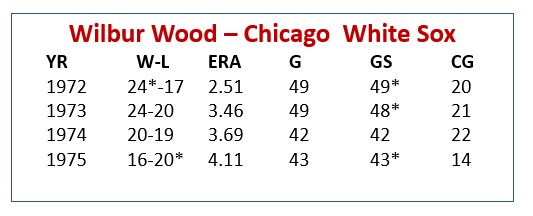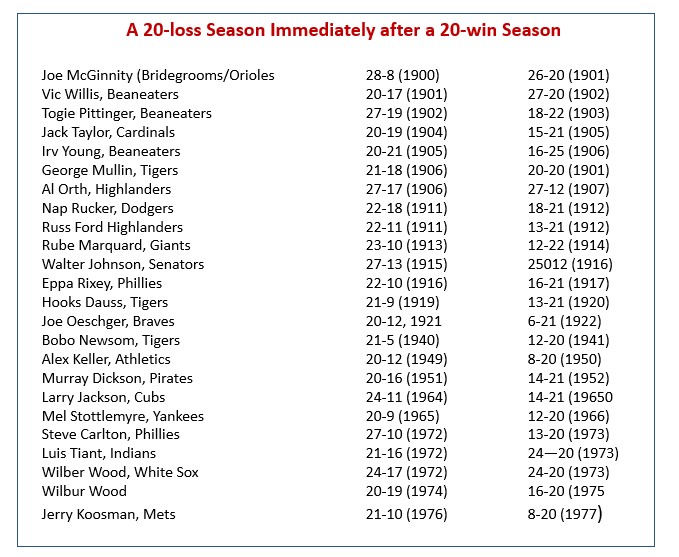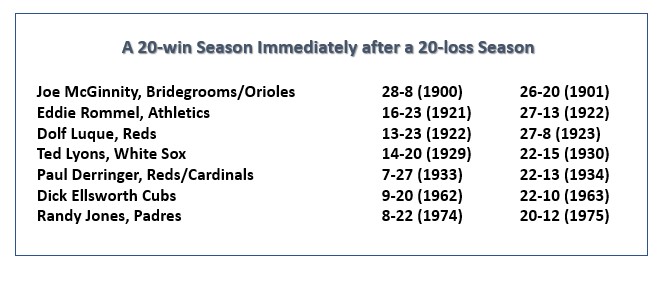Texas Rangers’ first baseman Ronald Guzman faced Astros ‘right-hander Justin Verlander for the first time on April 15, 2018 and struck out three times in three at bats – on a total of ten pitches). He next stepped into the batter’s box against Verlander on May 11 and fanned twice more in two at bats – on a total of nine pitchers. So, in his first two games against Verlander, Guzman was 0-for-five, with five whiffs on 19 pitchers. Ouch! Through the 2019 season, Guzman is o-for-17 against Verlander, with 12 strikeouts.
On the other side of the coin, Yunel Escobar (SS …. Braves. Blue Jays, Rays, Nationals, Angels) faced Verlander 18 times between 2010 and 2013 and never struck out against him (the most plate appearances for any MLB hitter who never fanned against Verlander). Escobar, however, hit only .200 against the power-pitching righty. For BBRT’s money, the most impressive batter for making contact versus Verlander might be White Sox SS Alex Cintron, who faced Verlander 14 times and never fanned, while collecting six hits (.429 average).
Those of you who read Baseball Roundtable regularly are familiar with the “Who’s Your Daddy?” series – presenting lineup that could be expected to perform unexpectedly well against some of baseball’s best pitchers. In the past, BBRT has featured such pitchers as Nolan Ryan, Bob Gibson and Pedro Martinez. (An explanation of the inspiration behind the “Who’s Your Daddy?” series can be found the end of this post.) Some readers have asked that BBRT include some current pitchers in the series, so this post will focus on 2019 AL Cy Young Award winner Justin Verlander. As always, I would stress that the pitchers included in the “Who’s Your Daddy?” series are among the “best in the business.” They are selected not because of the players who performed well against them, but rather because solid hitter performance when they were on the mound was the exception rather than the rule.
Note: The stats in this post do not include the 2020 season. They will be updated.
Before we get started on Justin Verlander, here are links to the previous editions of this series:
- Nolan Ryan, click here.
- Sandy Koufax, click here.
- Pedro Martinez, click here.
- Bob Gibson, click here.
- Randy Johnson, click here.
- Greg Maddux, click here.
Among those planned for the future are Bob Feller, Roger Clemens and Max Scherzer.
NOTE: STATS IN THIS POST AS OF MAY 25, 2020.
Why Justin Verlander is Part of This Series

Photo by GabboT 
Justin Verlander has pitched, through 2019, in fifteen major-league seasons (Tigers, Astros). He is a two-time Cy Young Award winner and one of only ten pitchers to win the Cy Young and MVP Awards in the same season (2011, Tigers). The eight-time All Star has a career record of 225-129, 3.33, with 3,006 strikeouts (only 850 walks) in 2,982 innings pitched. He has led the AL in wins three times, strikeouts five times, ERA once, winning percentage twice, complete games once, games started five times, innings pitched four times and shutouts once. He also has three no-hitters on his resume. He has topped 200 strikeouts in nine seasons, reached 300 whiffs in 2019 and has won 15 or more games ten seasons (topping twenty wins twice). Verlander, MVP of the 2017 America League Championship Series, also has 14-11, 3.40 post-season record (31 appearances), with 205 strikeouts in 187 2/3 innings. A future Hall of Famer. Verlander has earned a spot in the “Who’s Your Daddy?” series.
My God, that guy (Justin Verlander) is throwing 100 miles an hour in the sixth inning.
Hall of Famer Chipper Jones
Now, let’s take a look at the BBRT Justin Verlander “Who’s Your Daddy?’ lineup. First, some statistical leaders. Then the position-by-position lineup. All of these stats and selections are based on regular season performance. Note: As you look at the statistics for the players in this lineup, keep in mind that Verlander has held hitters to a .228 average over his career.
Catcher – Salvador Perez … .413 average, 26 hits, 16 RBI
Salvador Perez’ 26 career regular-season hits tie for the second-most safeties off the two-time Cy Young Award winner – and his 16 RBI tie for the most off Verlander. Perez has hit .375 or better against Verlander in four of the six seasons in which he faced him – with a high of .667 (six-for-nine in 2015.) Perez’ 26 hits and 16 RBI against Verlander are his regular-season career highs versus any pitcher.
Perez has eight MLB seasons under his belt (2011-18 … missing 2019 after Tommy John surgery), all with the Royals. He is a six-time All Star and five-time Gold Glover behind the plate. He has a .266 career average, with 141 home runs, 543 RBI and 381 runs scored in 942 games. He was also the MVP of the 2015 World Series.
Kind of a (Mad) Bummer
Madison Bumgarner has given up only one run in 36 World Series innings (five appearances). That tally came off a Salvador Perez home run in Game One of the 2014 WS.
Honorable Mention at catcher goes to Twins’ catcher Joe Mauer, who tied Perez with 26 career regular-season hits off Verlander (second-most), but took 19 more at bats to do it. Mauer finished .317-4-11 versus Verlander, with 15 walks and 14 strikeouts. (Mauer’s on-base percentage versus Verlander is .423, Perez’ .418.)
________________________________________________________
First Base – Billy Butler … For his body of work & Jose Abreu for his power
First base was a tough choice, coming down to Billy Butler or Bobby Abreu. After much deliberation, BBRT is calling this one a tie. Let’s look at Butler first. The Royals’ first-sacker has the most career regular-season hits against Verlander (35); the most career RBI (tied with Salvador Perez at 16); the third-most doubles (tied with Joe Mauer (6); and – what really caught BBRT’s eye – a .402 career average against him. Butler’s best season against Verlander was 2013, when he collected nine hits (.600 average) in six games off the righty.
Then there is Abreu, whose six regular-season home runs are the third-most against Verlander. He can also boast a .364 average (16-for 44) and eight of his sixteen safeties have been for extra bases (.818 slugging percentage.) He probably should have this spot to himself, but Butler’s .400+ average was one of those “shiny objects” I couldn’t resist. Now, I’m not much for a DH; but if I were to include one in this lineup (Verlander is a career American Leaguer), it would be Abreu.
Bookends
Jose Abreu’s first at bat against Justin Verlander came on April 22, 2014 – and he delivered a home run to deep center. His most recent at bat against Verlander came on May 21, 2019 – and he delivered a home run to deep center. The first dinger provided one of just two runs Verlander gave up in seven innings of an 8-6 Tigers’ win over the White Sox; while the latter was the only run (and only hit) that Verlander surrendered in eight frames of a 5-1 Astros’ win over the ChiSox.
Billy Butler played 10 MLB seasons (2007-16 … Royals, A’s and Yankees) and hit .290 (1,479 hits), with 147 home runs and 728 RBI. He was an All Star in 2012, when he went .313-29-107.
Abreu was the 2004 American League Rookie of the Year (.316-37-107) and is a three-time All Star. In his six MLB seasons (2014-19 … all with the White Sox), he has driven in 100 or more runs five times and hit 30 or more home runs four times. His career stat line through 2019 is .293-179-611.
Jose Abreu defected from Cuba in 2013, after ten Cuban League seasons in which he hit .341-178-583 (640 games).
________________________________________________________
Second Base – Jose Altuve … .500+ average
Jose Altuve hit .563 (9-f0r-16) against Verlander before the two became teammates. In his six game against Verlander, Altuve was never held hitless, scored four runs and even stole home once. Admittedly, a small sample size, but you can’t ignore that .563 average.
In his nine MLB seasons to date (2011-19, Astros), Altuve is a six-time All Star, 2017 American League MVP, a three-time batting champion, four-time league leader in hits, two -time leader in stolen bases and one-time Gold Glover. He has topped 200 hits in a season four times (from 2014 through 2017, he collected 845 safeties) and stole 30 or more bases in six seasons (a high of 56 in 2014). His career stat line though 2019 is .315-128-538, with 754 runs scored and 254 stolen bases.
Honorable mention at second base goes to Asdrubal Cabrera, whose 21 regular-season hits tie for the sixth most against Verlander and, while he has hit only .276 against him, Cabrera has launched three three long balls and driven in 11 runs off Verlander. He might have been the choice at second base if it were not for his 30 strikeouts in 30 regular season games against Verlander – the third-most of any batter.
__________________________________________________
Third Base – Lonnie Chisenhall … .340 average, with three home runs
Lonnie Chisenhall is one of only 13 players who have reached double-digit RBI versus Verlander. He reached that figure in 50 plate appearances, despite not picking up his first RBI against Verlander until his 16th plate appearance against him (seventh game). Chisenhall started nine games against Verlander at third base, six in right field, two in center field and one at DH. His three regular-season home runs and ten RBI against Verlander are the most Chisenhall had against any pitcher.
Chisenhall played in eight MLB seasons (2011-18 … all with Cleveland). He was a .268 career hitter, with 64 home runs and 296 RBI (688 games). During his MLB career, he started 319 games at third base, 196 in RF, 25 at DH, 20 in CF, eight in LF and five at 1B. His best season was 2014, when he hit .280-13-59 in 142 games.
A Tough Day for Verlander
Chisenhall’s best day against Justin Verlander was June 26, 2016, when he came up against him three times in five innings of a Indians’ 9-3 win over the Tigers. Chisenhall singled in the second inning, had an RBI single in the fourth; and hit a two-run homer in the fifth (which knocked Verlander out of the game). Chisenhall’s fifth inning home run was one of four homers against Verlander that inning (Juan Uribe, Tyler Naquin, Mike Napoli and Chisenhall). In 453 starts, Verlander has had only three four-homer games … and this is the only time he gave up four long balls in an inning.
______________________________________________________
Shortstop – Jose Ramirez … Good power in the middle infield
The Indians’ Jose Ramirez had a heck of a year against Verlander in 2017. In four games, he went 5-for-8 (.625, with two home runs, four RBI, three walks (.727 on-base percentage) and no strikeouts. Ramirez, as you can see below, has solid career numbers versus Verlander. Those numbers would be even more impressive if it weren’t for the one 2019 game in which Ramirez faced Verlander. Verlander was apparently “on” that day, pitching seven two-hit, shutout innings (fanning 13), as the Astros topped the Indians 2-0. Ramirez faced Verlander three times that day and fanned three times, on a total of 12 pitches.
Ramirez has played seven MLB seasons (through 2019), all with the Indians. He has a career average of .280, with 110 home runs, 391 RBI, 451 runs scored and 117 stolen bases. He has been an All Star twice and led the American League in doubles with 56 in 2017 (tied for the fourteenth most doubles in any MLB campaign). In both 2017 and 2019, Ramirez finished third in the AL Most Valuable Player balloting. Note: Although Ramirez qualified as the Who’s Your Daddy shortstop, he has started 452 MLB games at 3B, 119 at 2B, 100 at SS, 49 in LF and seven at DH.
A couple of Jose Ramirez trivia tidbits …
- In 2016, Ramirez batted in every spot in the Indians’ lineup – and played four different positions (2B, 3B, SS, LF); and
- On September 3, 2017, Jose Ramirez tied an MLB record with five extra base hits in a game (three doubles and two home runs) – as Cleveland topped Detroit 11-1.
_________________________________________________
Outfield – Denard Span … .412 average
Denard Span put up a .412 average (19-for-46) against Verlander in 14 games, although he did not get an auspicious start against him. In his first at bat against Verlander – July 13, 2008 – Span fanned on three pitches. In his last two games against Verlander (July 31, 2013 with the Nationals and August 9, 2018 with the Mariners), Span collected two singles, a triple, a home run and a walk in five plate appearances. 
Span played 11 MLB seasons (2008-18 … Twins, Nationals, Giants, Rays, Mariners). He hit .281 (1,498 hits in 1,359 games), with 71 home runs 490 RBI, 773 runs scored and 185 steals. He led the AL and NL in triples once each and hit double-digit triples in three seasons. He also led the NL in hits (184) in 2014, with the Nationals.
Pass the Oxygen, Please …
On June 29, 2010, Span tied the modern-era MLB record by rapping and running out three triples in one game (an 11-4 Twins win over the Tigers). In that game, Span collected three triples, a single and a walk in five plate appearances; scored twice; and drove in five runs.
_________________________________________________
Outfield – Alex Rios … .857 average against Verlander in 2013
Alex Rios hit .347 against Justin Verlander (17-for-49) in 17 games. He was particularly tough on Verlander in 2013, when he faced him seven times in two games and collected five singles and a triple.
Alex Rios played 12 MLB seasons (2004-15 …. Blue Jays, White Sox, Rangers Royals). He hit .277 (1,778 hits) in 1,691 games, with 169 home runs, 794 RBI, 885 runs scored and 253 stolen basses. He was a two-time all Star.
___________________________________________
Outfield – Matthew Joyce … Slow start, strong finish
Matthew Joyce saw his first action versus Verlander on July 27, 2010 – and struck out swinging in his first two at bats (first and fourth innings). He then added a tie-breaking RBI double in the sixth that proved to be the winning hit in a 3-2 Rays’ victory over Verlander and the Tigers. He did pretty well after those first two whiffs. In his 20 regular-season plate appearances versus Verlander since that time, Joyce has gotten on base ten times – four singles, two doubles, two home runs, two walks and one safe on an error.
 Matthew Joyce has played 12 MLB seasons (2008-19 …. Rays, A’s, Angels, Pirates, Braves, Tigers). He has a .243 career average in 1,311 games, with 145 home runs and 482 RBI. Joyce was an All Star in 2011 (Rays), when he hit .277, with 19 long balls and 75 RBI.
Matthew Joyce has played 12 MLB seasons (2008-19 …. Rays, A’s, Angels, Pirates, Braves, Tigers). He has a .243 career average in 1,311 games, with 145 home runs and 482 RBI. Joyce was an All Star in 2011 (Rays), when he hit .277, with 19 long balls and 75 RBI.
___________________________________________________
Pitcher – Julio Teheran … For the Win
Spending his career (to this point) in the American League, with its DH, there have not been very many pitcher’s regular-season at bats versus Justin Verlander. So, this spot goes to the Braves’ Julio Teheran, who faced Verlander just twice, but produced a pair of singles. They came on October 2, 2016 versus Detroit. It was the final day of the 2016 season – and a nice finish for Teheran. The Braves won 1-0, and Teheran picked up the victory after going seven shutout innings (three hits, one walk, 12 strikeouts) – plus, of course, the two hits off Verlander.
Teheran has pitched in nine MLB seasons (2011-19 … Braves) and put up a 77-73, 3.67 record. He is a two-time All Star and twice won 14 games in a season. As a hitter, Teheran has 56 hits in 383 at bats (.147 average). In December of last year, he signed (as a free agent) with the Angels.
______________________________________________
Final honorable Mention: Carlos Santana, with his eight regular-season home runs against Verlander (the most of any hitter to date) deserves a mention here. Santana’s 14 RBI are also the third-most against Verlander – and 13 of his 18 hits against him have gone for extra bases. Santana’s .231 average against Verlander (18-for-78) is what kept him out of this lineup. (Admittedly, I have a batting average/on-base percentage bias.) Santana has started 12 games against Verlander at 1B, nine at DH, eight at Catcher and one at 3B.
Who’s Your Daddy? What It’s All About.
On September 24, 2004, in the middle of a tight pennant race, the Yankees handed future Hall of Famer Pedro Martinez and the Boston Red Sox a tough 6-4 loss. Martinez went 7 1/3 innings giving up nine hits and five earned runs. The game came just five days after (in his previous start) Martinez had lasted just five frames against the Bronx Bombers (eight hits, eight earned runs) in a 16-7 loss.
After that second loss, Martinez candidly commented, “What can I say? I just tip my hat and call the Yankees my daddy.” Little did he know that his comment – and a Yankee fans’ chant of “Who’s your daddy?” would follow him into future starts in New York (all the way to his final MLB start – against the Yankees for the Phillies – in Game Six of the 2009 World Series.)
The concept of “Who’s your daddy?” became the inspiration for Baseball Roundtable to take a look at the players who “had the number” of some of MLB’s premier pitchers. Again, you can find links to the previous “editions” of “Who’s Your Daddy?” near the top of this post.
Primary Resources: Baseball-Reference.com; MLB.com; Baseball-Almanac.com
BASEBALL ROUNDTABLE ON THE TOP 100 BASEBALL BLOG LIST
 Baseball Roundtable is on the Feedspot list of the Top 100 Baseball Blogs. To see the full list, click here.
Baseball Roundtable is on the Feedspot list of the Top 100 Baseball Blogs. To see the full list, click here.
I tweet (X) baseball @DavidBaseballRT
Follow/Like Baseball Roundtable’s Facebook Page here. More baseball commentary; blog post notifications; PRIZES.
Member: Society for American Baseball Research (SABR); The Baseball Reliquary; The Negro Leagues Baseball Museum.








